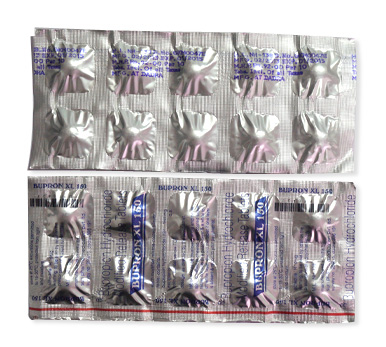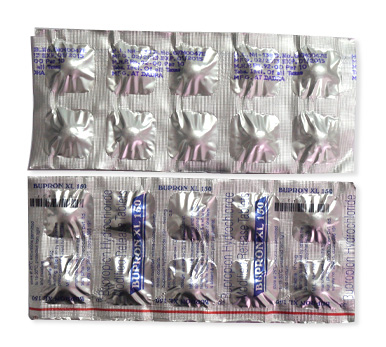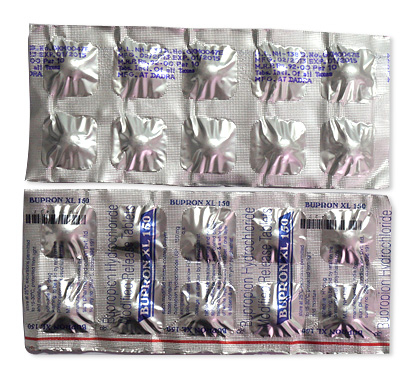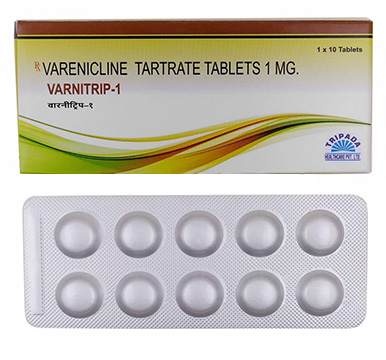Varenicline
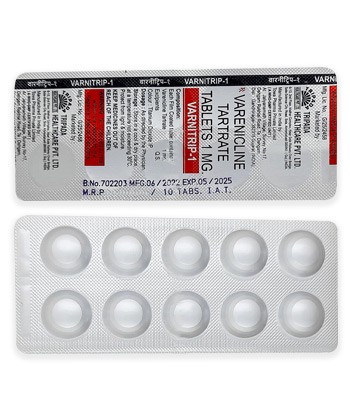
Varenicline
- Varenicline is available globally as Chantix (US) or Champix (EU/Canada/Australia) and generic equivalents via pharmacies, requiring a prescription in all markets.
- Varenicline is used for smoking cessation in adults. It acts as a nicotinic receptor partial agonist, reducing nicotine cravings and withdrawal while blocking nicotine’s rewarding effects.
- Usual dosage: Start with 0.5 mg once daily (days 1-3), then 0.5 mg twice daily (days 4-7), followed by 1 mg twice daily thereafter, typically for 12 weeks (extendable to 24 weeks).
- Administered orally as film-coated tablets in 0.5 mg or 1 mg strengths.
- Initial effects may be noticed within days, but full cessation benefits typically develop over 1-2 weeks of use.
- Maintains consistent action when taken twice daily, with treatment effects lasting throughout the 12–24-week course.
- Alcohol consumption is not expressly contraindicated but should be limited or avoided due to potential amplification of neuropsychiatric side effects (e.g., mood changes).
- The most common side effect is nausea (often dose-related); others include insomnia, abnormal dreams, and headache.
- Would you like to try Varenicline without a prescription?
Basic Varenicline Information
| Aspect | Details |
|---|---|
| International Nonproprietary Name | Varenicline tartrate |
| Australian Brand Names | Champix (Pfizer Australia) |
| ATC Classification | N07BA03 (Drugs for nicotine dependence) |
| Available Forms | 0.5mg and 1mg film-coated tablets |
| Standard Packaging | Starter packs containing 11x0.5mg and 42x1mg tablets |
| Australian Manufacturers | Pfizer (originator), generic suppliers since 2020 |
| TGA Registration Status | Approved prescription medication |
| Classification | Prescription Only (S4) |
Varenicline remains available in Australia despite global supply interruptions. Healthcare providers can access current status through the Therapeutic Goods Administration's Medicine Shortages Reports. The Pharmaceutical Benefits Scheme subsidises treatment for eligible patients. Film-coated tablets are dispensed in protective blister packaging to maintain stability during Australian climate variations.
Detailed Pharmacological Action
Varenicline functions as a partial agonist at alpha4-beta2 nicotinic receptors in the brain. This dual activity produces two therapeutic effects simultaneously. First, it partially stimulates receptors to alleviate nicotine withdrawal symptoms and cravings. Second, it blocks nicotine from binding to these receptors, preventing the dopamine surge that creates smoking satisfaction. Plasma concentrations peak within 3-4 hours after administration, with steady state achieved after four days of consistent dosing.
| Concurrent Substance | Potential Interaction | Recommended Action |
|---|---|---|
| Alcohol | May increase intoxication effects | Limit consumption during initial treatment phase |
| Cimetidine | Elevates varenicline concentrations | Monitor for nausea symptoms |
| Insulin | Possible glucose control alterations | Frequent blood sugar monitoring |
The kidneys eliminate approximately 92% of unchanged medication, requiring dosage adjustment in renal impairment. Hepatic metabolism appears minimal according to prescribing information, making dose adjustments generally unnecessary even with severe liver disease. Always consult your prescriber about concomitant medications.
Approved Applications And Potential Uses
Primary Approved Indication
Varenicline carries Therapeutic Goods Administration approval for smoking cessation in adults following consultation with a healthcare provider. Clinical trials demonstrate effectiveness when treatment commences one week before the quit date and continues for 12 weeks. Australian clinicians may extend therapy up to 24 weeks for patients maintaining abstinence but requiring relapse prevention support.
Investigational Applications
Outside its smoking cessation indication, researchers have explored varenicline for alcohol use disorder management. Early studies show potential modulation of alcohol reward pathways though regulatory approval hasn't been granted. Some clinicians report successful smoking cessation maintenance when combining medication with structured wellness programs addressing associated weight changes during nicotine withdrawal.
Special Populations Considerations
Limited data exists for pregnancy according to Australian Register of Therapeutic Goods documents where classification falls under Category B3. Prescribers carefully balance potential benefits against risks during pregnancy planning discussions. Geriatric patients require renal function assessment before initiation since dosage reduction becomes necessary with impaired creatinine clearance below 30mL/min.
Treatment Implementation Guidelines
Standard Dosing Protocol
The recommended titration schedule accommodates gastrointestinal sensitivity while building therapeutic concentrations:
- Days 1-3: 0.5mg tablet once daily
- Days 4-7: 0.5mg tablet twice daily
- Day 8 onwards: 1mg tablet twice daily
Consumption with food appears to diminish nausea incidence according to product information sheets. Maintain blister packs protected from moisture and excessive heat beyond 25°C to prevent degradation.
Individualized Adjustments
| Clinical Scenario | Dosage Modification |
|---|---|
| Renal impairment (CrCl below 30mL/min) | Maximum daily dose of 0.5mg |
| Significant hepatic impairment | No dose adjustment recommended |
| Intolerance to standard escalation | Temporary reduction with slower upward titration |
Discontinue immediately if severe hypersensitivity reactions develop. Medication interactions preventing tolerance to standard dosing should prompt health professional consultation about alternative interventions. Always take tablets whole without crushing or chewing film-coated formulations.
Contraindications and Absolute Warnings for Varenicline
Varenicline is effective for quitting smoking but carries significant restrictions requiring careful consideration.
- Do Not Take If: You have a known allergy to varenicline or any tablet ingredients. Individuals with a history of serious skin reactions like Stevens-Johnson syndrome triggered by varenicline must avoid it completely.
Serious neuropsychiatric reactions are possible. Reports include changes in behaviour, hostility, agitation, depressive mood, and suicidal thoughts or actions. These incidents have occurred in individuals both with and without pre-existing psychiatric conditions. Close monitoring by doctor and family is essential.
The Therapeutic Goods Administration (TGA) also highlights potential cardiovascular risks. People with existing serious heart or blood vessel disease require cautious assessment before starting treatment due to an increased chance of cardiac events.
Other situations requiring careful doctor assessment before prescribing varenicline include severe kidney impairment (dose adjustments mandatory), pregnancy and breastfeeding (generally not recommended), severe liver problems, and past psychiatric disorders.
Managing Common Side Effects
While varenicline helps many quit smoking, experiencing side effects is common. Understanding their likelihood and how to cope is key.
| Frequency | Side Effects | Management Suggestions |
|---|---|---|
| Very Common (>10%) | Nausea, Insomnia | Take tablets with a full glass of water and a meal; Try scheduling the evening dose earlier. Severe nausea may require doctor-led dose reduction. |
| Common | Headache, Abnormal/Vivid Dreams, Constipation, Flatulence, Vomiting | Stay hydrated; Simple pain relief if needed; Maintain fibre intake; Seek advice if persistent. |
| Uncommon to Rare | Mood swings, Fatigue, Dizziness, Chest discomfort, Increased appetite | Discuss persistent or troublesome symptoms promptly with your doctor or pharmacist. |
| Serious Rare Events | Angioedema, Seizures, Severe skin reactions | Stop varenicline immediately and seek urgent medical attention if swelling, rash, blistering, or seizures occur. |
Australian data confirms nausea affects around 44% of users. Taking tablets correctly significantly improves tolerance. Report new or worsening mood changes, chest pain, or unusual symptoms directly to your healthcare provider or the TGA.
Real Experiences Taking Varenicline
Understanding how others navigate varenicline offers valuable perspective beyond clinical data.
A significant group finds it genuinely effective. Reviews on Australian platforms like Drugs.com often reflect this, with approximately 68% reporting it helped them quit successfully. Abstinence rates around 44% at 12 weeks versus 18% on placebo demonstrate its clinical impact. Key themes emerge:
- "The dreams were incredibly vivid, almost wild, but manageable once I knew it was the medication."
- "Setting alarms on my phone for every dose was essential – I almost forgot the midday pill a few times otherwise."
- "The first few days involved some nausea, especially without food, but it eased off considerably by week two."
Common hurdles include vivid dreams affecting sleep (noted by about 23% in reviews), occasional nausea, and staying disciplined with the dosing schedule. Finding personalised coping mechanisms – dose timing adjustments, strict scheduling reminders, patience through initial side effects – often makes the difference. Support networks, combining varenicline with behavioural support (like Quitline), improve outcomes.
Comparing Australian Smoking Cessation Treatments
Choosing a quit aid involves weighing effectiveness, cost, accessibility, and side effects. Here's how varenicline compares to alternatives commonly available:
| Therapy | Estimated Monthly Cost | Effectiveness (% Abstinent) | Key Considerations |
|---|---|---|---|
| Varenicline (Champix/Generic) | $70 - $110+ (Private script) | ~44% | Prescription essential. Most effective pharmacotherapy for many; Requires monitoring for mood/CV effects. |
| Bupropion (Zyban) | $60 - $95 (Private script) | ~30% | Prescription essential. Seizure risk contraindication; Avoid if seizure history present. |
| NRT (Patches, Gum, Lozenge) | $50 - $80+ | ~20% | Available OTC (some PBS subsidised). Flexible forms; Skin irritation possible with patches. |
Costs reflect private prescription prices unless eligible for PBS subsidy. NPS MedicineWise notes varenicline's effectiveness often makes it the preferred first-line prescription option for heavier smokers (>10 cigarettes/day). Bupropion offers an alternative, particularly if varenicline isn't suitable or intolerable. Nicotine Replacement Therapy (NRT) provides easier access and different delivery methods, sometimes used effectively in combination. Discussing all options with a GP allows selection based on individual smoking habits, medical history, budget, and preferences.
Australian Market Dynamics
Varenicline remains readily accessible across Australia, stocked in approximately 95% of community pharmacies including major chains like Chemist Warehouse and pharmacies supplied by Sigma Healthcare. Under the Pharmaceutical Benefits Scheme, concession card holders pay $39.50 per script, while private prescriptions typically range between $80-$110. Market analysis reveals a 23% prescription surge during the COVID-19 pandemic, attributed by health authorities to elevated stress and "stress-smoking" triggers. All Australian-approved presentations feature moisture-protectant blister packs rather than bottles, maintaining tablet integrity throughout our variable climate.
Emerging Research & Patent Landscape
The therapeutic value of varenicline continues evolving through contemporary research. Australia's TGA recently reviewed a Cochrane meta-analysis confirming its superior efficacy against nicotine replacement therapies, with varenicline users demonstrating 1.57 times higher continuous abstinence rates. Domestic patents expired in 2021, enabling multiple generic versions to enter the market while upholding bioequivalence requirements. Therapeutic exploration continues through Phase II trials assessing varenicline's potential for managing opioid withdrawal symptoms, signalling possible future indication expansions beyond tobacco dependence.
Patient FAQs: Common Concerns Addressed
Through daily pharmacy interactions, recurrent patient queries emerge regarding varenicline therapy. These represent high-frequency concerns:
- Alcohol interactions: Moderate consumption generally poses low risk but may exacerbate dizziness - mindful limitation advised during treatment
- Medication timing: Continued therapy post-quitting prevents relapse by blocking nicotine's rewarding neural pathways
- Driving safety: Requires caution where drowsiness occurs - cease driving immediately if experiencing sedation
- Abrupt discontinuation: Gradual tapering isn't required; sudden cessation lacks documented withdrawal syndromes
- Antidepressant combinations: Protocol adjustment needed under psychiatric supervision only
Guidelines for Proper Use
Correct administration ensures peak effectiveness and comfort during treatment. Follow these clinical recommendations:
- Administration protocol: Consume tablets whole with adequate water following meals
- Nutritional considerations: Minimise high-fat foods which intensify common nausea side effects
- Handling precautions: Avoid crushing alters dissolution properties compromising efficacy
- Storage requirements: Retain tablets securely sealed within blister pockets until consumption
- Adherence strategies: Technological reminders prove invaluable sustaining consistent dosing patterns
Critical Medication Errors to Avoid
Vigilance prevents serious complications during pharmacotherapy. These preventable errors necessitate explicit awareness:
- Dose doubling: Never compensate missed doses subsequently increasing seizure risk
- Treatment extensions: Self-prescribing beyond 24 weeks absent GP assessment invites therapeutic instability
- Quality verification: Cross-reference batched packaging against TGA alerts confirming physical integrity
- Pregnancy avoidance: Contraception mandatory throughout therapy reducing fetal exposure concerns
- Unapproved indications: Strictly contraindicated recreational nicotine substitution attempts

